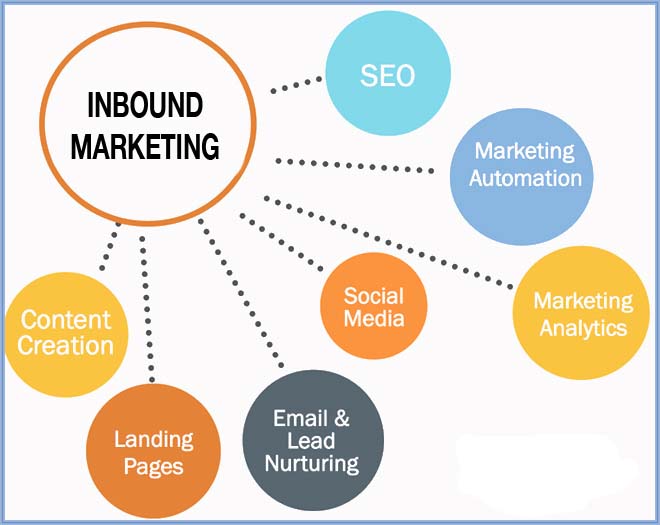
Inbound Marketing
What is Inbound Marketing?
Inbound marketing is a strategy that utilizes content to bring potential customers to you, rather than having your marketing efforts fight for their attention. Inbound marketing is about creating and sharing content with the world. By creating content specifically designed to appeal to your target market, inbound attracts qualified prospects to your business.
Companies and individuals utilize blogs, podcasts, video, eBooks, newsletters, whitepapers, organic search, physical products, social media marketing, and paid promotions to reach a relevant target audience.
Here is a list to help you with inbound marketing.
- Create targeted content that answers prospects’ and customers’ basic questions and needs. This is typically done by blogging. Businesses that blog get 77% more traffic and 97% more links than those that do not.
- Use Social Media to share blog content as well as to drive traffic. There are over 2.03 billion social media users. This opens up a great new channel to drive traffic and find new customers.
- Use SEO to make sure you are appearing prominently when and where users search. 93% of online experiences begin with a search engine. When you properly optimize your site and content for search engines, you’ll increase your rankings and get more traffic.
You need to carefully, analytically choose keywords, optimize your pages, create content, and build links around the terms your ideal buyers are searching for. - Interact on the networks where your ideal buyers spend their time. Affiliates see a 6-to-1 return when they can find and engage relevant audiences on other sites.
- Create a Call-To-Action. These present different users with offers that change based on buyer persona and lifecycle stage.
- Create Value with Content Offers – Premium content such as ebooks, video and email courses generates 3 times as many leads as traditional outbound marketing.
- Use landing pages to convert visitors. When a website visitor clicks on a call-to-action, they should then be sent to a landing page. The offer in the call-to-action is fulfilled will be fulfilled on the landing page. This is where the prospect submits information that you can use to begin a conversation with them.
- Use Opt-In Forms to increase Conversions. If done in a value-added way as opposed to spamming, this can be a great way to grow your list with a group of highly engaged members of your target audience.
- Send Emails to Close More Sales. A series of emails focused on useful, relevant content can build trust with a prospect and help them become more ready to buy. Every $1 spent on email marketing has an average return of $44.25
- Set Up Marketing Automation. This process involves creating email marketing and lead nurturing tailored to the needs and lifecycle stage of each lead. For example, if a visitor downloaded an eBook on a certain topic from you in the past, you might want to send that lead a series of related emails. Automating the lead nurturing process generates a 10% or greater increase in revenue in just 6-9 months.
- Use social media to engage and communicate with prospects. 53% of people who follow brands on social media are more loyal to those brands. You can also promote your blog post and offer through social media to drive traffic into the top of your funnel.
- Keep track of the social conversations that matter to you most. Listen out for your customers’ questions, comments, likes, and dislikes – and reach out to them with relevant content.
- Consider creating Retargeting and PPC Online Ads. Retargeted visitors are 70% more likely to convert on your website.
Over to you.
